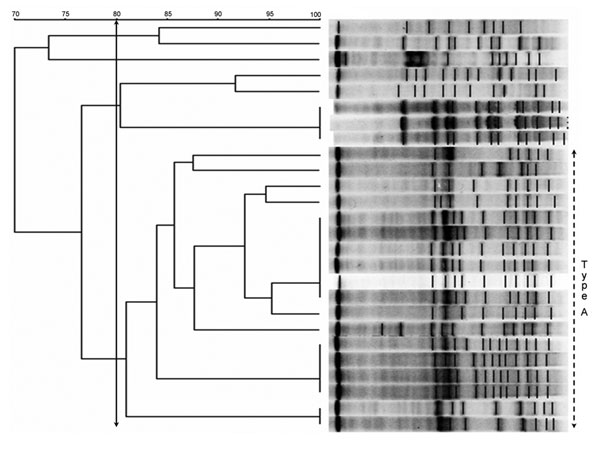Volume 13, Number 5—May 2007
Letter
Vancomycin-resistant Enterococci, Mexico City
Figure

Figure. Pulsed-field gel electrophoresis (PFGE) banding patterns of chromosomal DNA of 26 isolates of vancomycin-resistant enterococci. There is a clear predominant type, classified as type A (≥80% similarity), composed of 18 isolates of Enterococcus faecium. There are at least 3 subtypes that display a 100% similarity.
Page created: June 23, 2010
Page updated: June 23, 2010
Page reviewed: June 23, 2010
The conclusions, findings, and opinions expressed by authors contributing to this journal do not necessarily reflect the official position of the U.S. Department of Health and Human Services, the Public Health Service, the Centers for Disease Control and Prevention, or the authors' affiliated institutions. Use of trade names is for identification only and does not imply endorsement by any of the groups named above.